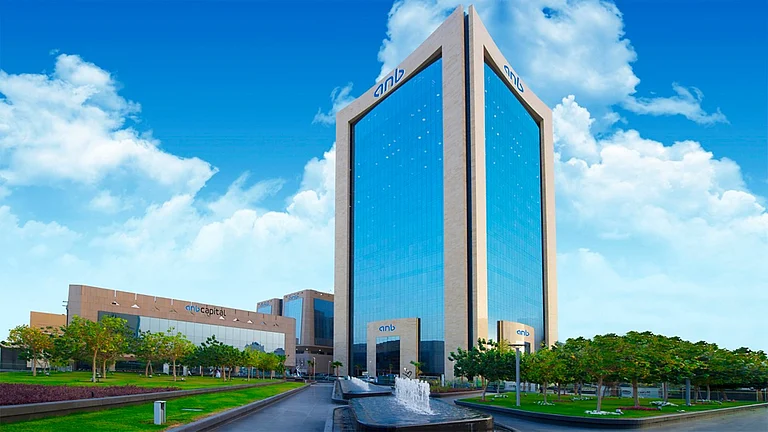When the Covid pandemic quaked the world, healthcare and hospital businesses were the most affected, but in ways different from other segments. While many, like airlines and hotels, shut down completely, hospitals had to actually work overtime to save lives. The hospitals could not stop services, even for a few minutes or hours. Life changed for CMA Rohit Kumar, CFO, Apollomedics Super Specialty Hospital, during the first and second wave of Covid, in order to manage both Covid and non Covid patients. Eventually, due to excess load of covid patients during the second wave, private hospitals were mandated by the government to have separate covid treatment areas. The challenge for Kumar along with the hospital management team was not only to treat covid as well as non-covid patients but also take along entire doctors and admin staff members with their family and quench the anxiety associated with the unknown results because of covid. Also he had to keep an eye on viability. The hospital had already earned a positive EBIDTA in second quarter of 2019-20, and clocked healthy annual revenues of Rs 125 crore in the first year of operation. At the same time, he needed to urgently, and aggressively, respond to save lives that the new virus was claiming at a deathly pace. Although saving lives was a priority, he found a solution to do both.
Apollomedics immediately leased appx 50,000 sq ft of land that lay unused next to the main hospital. Within five days, a Covid hospital was constructed, with the latest equipment and facilities. The only difference: it was housed within waterproof German hangers and entire treatment started as per process, policies, protocol and tariff defined by the government.

As envisaged, it served both purposes: saved lots of lives, and allowed the main hospital to focus on non-covid patients.
“The existing staff was divided between covid and non-covid sections. The former were motivated through boarding & lodging facility at a good hotel, sufficient compensatory off and hospital took responsibility to safeguard their family members while they were working at covid hospital.
The team was proud when the apprx 40-bed Covid section was ready in five days, reminisces CMA Kumar. The 250-bed main hospital continued as usual. The load of non-covid patients also increased during the Covid period because many other hospitals were not continuing the regular work due to lack of staff and team.
During both the waves of covid, positive sentiment was created among people of Lucknow region which helped the hospital in subsequent years as ethical and affordable healthcare delivery system.
As the hospital completes five years in FY 2023-2024, the annual turnover is now touching more than Rs 400 crore, with an EBIDTA of nearly Rs 100 crore.

A combination of costs and revenue strategies helped Kumar to make a success out of the Lucknow hospital, which is the fastest-growing among new hospitals of the Apollo group, and the best-performing one in initial years. Before commencement, intelligent tariffs analysis was done which helped Kumar in building the organization where it stands today. Apollomedics placed a strategy of minimum premium of 5-7% over existing Lucknow healthcare market (largely nursing homes) and 25% lesser than the Delhi healthcare market. This strategy created sweet spot both for patients and hospital. It reflected in lot of patients preferring Apollo Lucknow rather than visiting Delhi for advance treatment. This strategy, obviously, acted like a double-edged sword. There would be a downward pressure on revenues, thanks to the discounted tariffs that came with the same quality as Delhi hospitals albeit at the same or higher HR cost (Doctors & Admin staff). However, the intent was to deliver good world-class treatment at affordable cost. This led to increased volumes which compensated for the lesser ARPOB and higher costs.
The hospital created a team of highly skilled doctors and the only mandate provided to this team was to deliver completely ethical treatment. This simple singular approach created a very strong goodwill which led to its success with good revenues and EBITDA margins. The team rigorously and assiduously screened all support functions viz housekeeping, F&B, Nursing, Maintenance, IT and other service providers.

All above had led to NABH & NABL accreditation of the hospital within first year.
The cost management which comes as second nature of Kumar is exemplary, evidenced by the high EBITDA margins. According to Kumar, the Lucknow hospital has the fastest discharge rate, which increases the bed-turnover leading to lowest ALOS which resulted in increased volumes, reduced costs, and increased revenues and profits.
One example, the hospital started robotic knee replacement, which was priced appx 15% higher than the conventional knee replacement surgery just to cover additional robotic consumable cost. But at the same time it reduced hospital stay and early recovery which led to preference of robotic knee replacement surgeries. This has resulted in increased volumes , and hence revenues and EBITDA.
In Kumar’s parlance, this is how a CFO along with CEO can improve margins along with main focus on patient care, if he co-pilots the operations with the business heads, keeps his eyes and ears open, and is flexible enough to take tough decisions to help business grow with healthy financials along with world-class patient care.
Since the Lucknow hospital is operating at peak capacity, he has set his eyes on higher targets. The company has procured land in Varanasi, and plans to build a 400-bed greenfield tertiary care hospital in the next two years. Further, there is strong plan and case to build another 400 bed greenfield hospital in Lucknow in the next three years.












 Just one email a week
Just one email a week